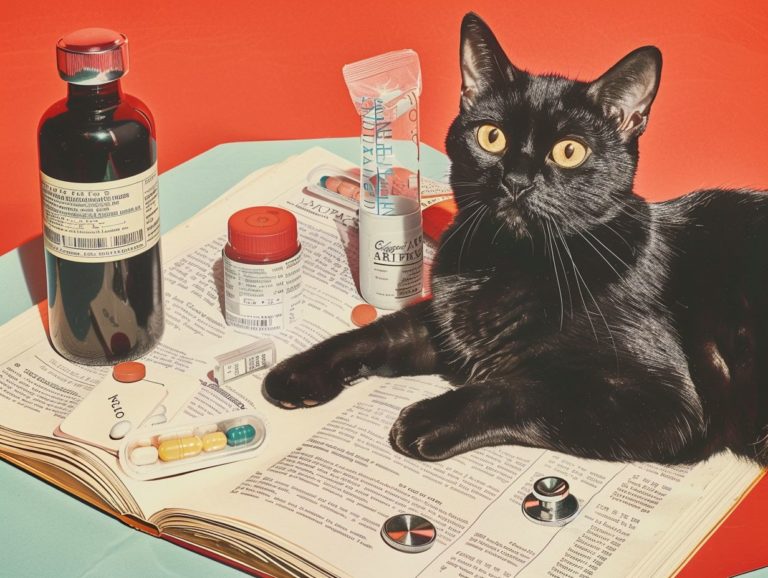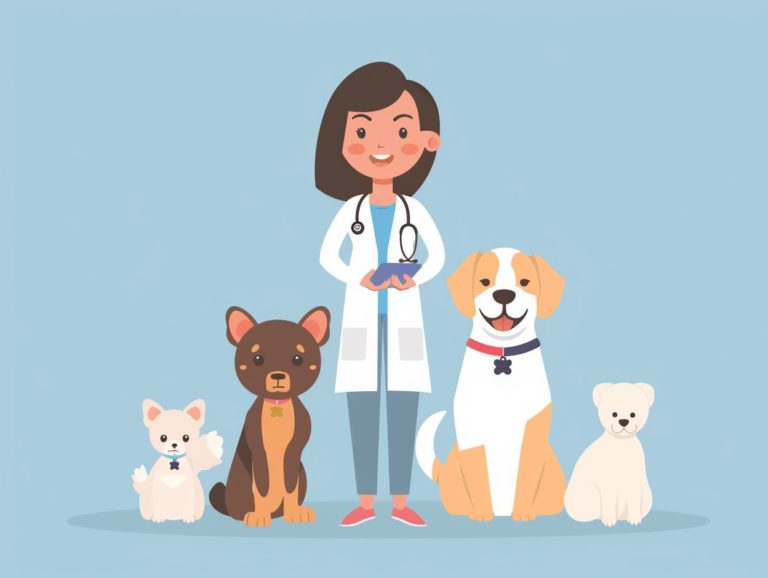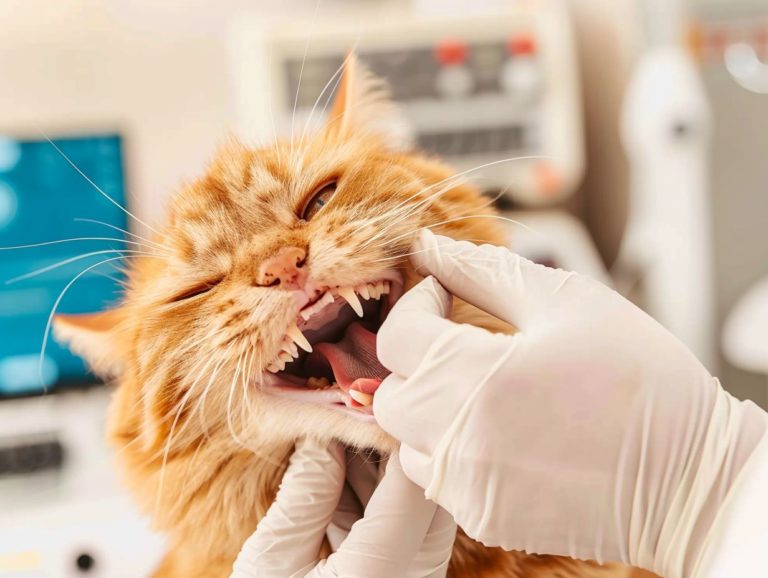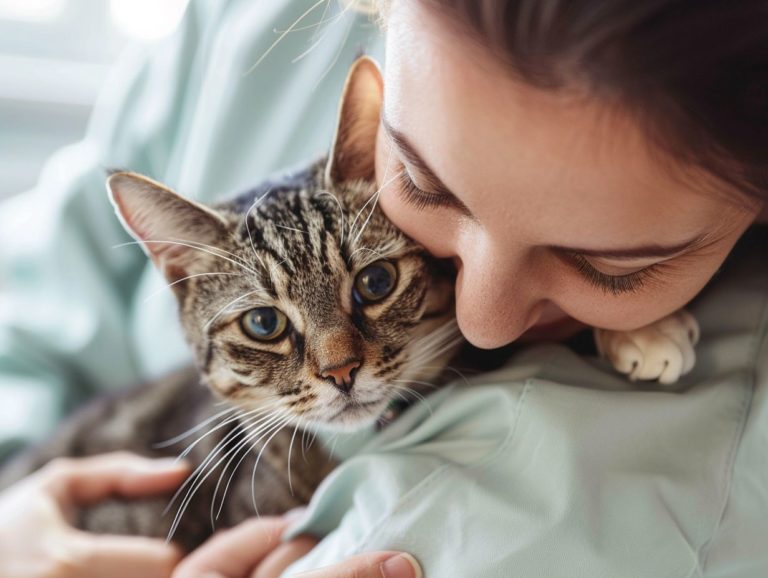How To Handle Insurance Claims For Your Cats Health Issues
This article focuses on pet insurance for cats, providing essential information that every pet owner concerned about their cat’s health and well-being should be aware of. It includes a discussion on what cat insurance covers, how it functions, common health issues in cats along with prevention and treatment methods, and a detailed guide on filing a claim.
Additionally, the article offers tips on optimizing insurance coverage and explores alternative options to pet insurance to guarantee coverage for your cat’s health expenses.
Key Takeaways:
Understanding Pet Insurance
Understanding pet insurance is crucial for ensuring the health and well-being of pets for every pet owner. Pet insurance is a financial product that provides coverage for the cost of veterinary expenses, helping to manage the financial aspects of unexpected health complications for pets. It enables pet owners to make the best decisions about their pets’ health without the burden of high medical bills, allowing them to focus on providing optimal care without financial worries. With pet insurance, pet owners can feel prepared for unexpected events that may necessitate costly treatments or surgeries for their pets, offering a sense of safety and security and reducing the stress and concerns related to pet healthcare.
What it Covers and How it Works
For pet owners planning their pet’s healthcare, understanding what Pet Insurance covers and how it works is crucial information. Pet insurance covers veterinary visits, surgeries, medications, and other medical expenses related to the pet’s healthcare.
When a pet owner opts for pet insurance, they can select from various coverage options that suit their budget and needs. Some policies may include emergency care, hereditary conditions, and alternative therapies like acupuncture or physical therapy.
Maximizing insurance benefits also requires pet owners to grasp the claim process. Typically, pet owners settle the vet bill themselves and then file a claim with the insurance company for reimbursement. Keeping thorough records and receipts of all pet-related expenses is essential to facilitate the claims process.
Common Health Issues in Cats
It is important for cat owners to know the most common health issues in cats in order to detect and treat diseases early. Cats are susceptible to several types of health problems, including dental disease, urinary tract disease, obesity, and upper respiratory infections.
Dental disease may present with symptoms such as bad breath, drooling, or decreased appetite, while urinary tract disease may manifest as increased frequency of urination or blood-stained urine. Obesity can be prevented through portion control and exercise, and upper respiratory infections are often characterized by sneezing and nasal discharge.
Regular veterinary exams, good nutrition, and proper hydration are essential for maintaining your cat’s overall health. Treatment for each condition may range from prescription dental diets and medications to surgery.
Identifying and Addressing Health Concerns
Identifying and addressing health concerns in cats involves close observation and understanding of feline behavior. Regular veterinary check-ups and monitoring changes in appetite, behavior, and litter box habits are essential for early detection of potential health issues in cats.
Signs such as changes in physical appearance including weight, coat condition, grooming habits, as well as unusual lethargy, coughing, sneezing, and vomiting should not be overlooked. Dental hygiene is also crucial, so observing a cat’s dental health and watching for signs of dental problems like bad breath and swollen gums is important.
Engaging in interactive play and providing mental stimulation can enhance overall health and help prevent behavioral issues in cats.
Filing a Claim for Your Cat’s Health Issues
Submitting a claim for your cat’s medical needs to your pet insurance provider is an essential step in covering veterinary expenses. To prepare for a claim, it is crucial to gather your cat’s medical history, invoices, and itemized bills detailing the services provided. A clear diagnosis from your vet can strengthen your claim.
Keeping a record of all communication with your insurance provider, including claim forms and any correspondence, is key to streamlining the process. Proper documentation and prompt submission are critical factors in securing a successful claim for your cat’s medical needs.
Step-by-Step Guide to Filing a Claim
Understanding how to file a claim for your cat’s health problems step by step can streamline the reimbursement process for veterinary expenses. The necessary steps include:
-
familiarizing yourself with the coverage details for your cat’s health issues outlined in your pet insurance policy, along with the claim submission procedure;
-
gathering essential documentation such as veterinary invoices, medical records, and receipts for treatments or medications linked to your pet’s health;
-
accurately completing the claim form and providing all pertinent information regarding the treatment and associated costs;
-
meticulously reviewing all details for accuracy prior to submission;
-
coordinating with your veterinarian if additional documentation or support is required for your claim;
-
adhering to the insurer’s stipulations and deadlines for claim submission to expedite processing for your cat’s health issues.
Tips for Maximizing Insurance Coverage
Maximizing insurance coverage for cat health serves to offset costs while ensuring the best care possible. The primary methods for optimizing insurance coverage include understanding one’s insurance policy, selecting the most appropriate coverage options, and maximizing preventive care benefits.
Enrolling in wellness programs that may help pay for routine exams, vaccinations, and dental care will further enhance the senior cats insurance benefits. Keeping cats up-to-date with vaccinations not only benefits their health directly but also helps prevent illnesses that may incur high treatment costs.
Regular veterinary check-ups are essential for early detection of health issues, potentially avoiding the need for more expensive treatments in the future. Maintaining a healthy weight through a good diet and regular exercise can improve overall cat health and may reduce the frequency of medical interventions.
Strategies for Reducing Out-of-Pocket Costs
To minimize out-of-pocket costs for your cat’s healthcare, consider strategies such as reducing immediate expenses through wellness exams, ensuring early disease detection, and utilizing insurance coverage for routine examinations.
A long-term approach involves promoting your cat’s health through a balanced diet and regular exercise to prevent costly health issues in the future. Keeping up with vaccinations and preventive care can also help save money by averting more expensive treatments later on.
Furthermore, seeking discounts, payment plans, or utilizing services from veterinary clinics, low-cost clinics, and community programs are additional ways to lower the expenses associated with caring for your cat.
Alternatives to Pet Insurance
There are alternative options to standard pet insurance that can help supplement financial means for covering your cat’s veterinary expenses. These alternative options include healthcare savings accounts, preventive care packages, and self-insurance.
Healthcare Savings Accounts allow individuals to set aside money for medical costs on a pre-tax basis, offering a tax-advantaged way to save specifically for insurance claims for your cat’s health issues.
Preventive Care Packages cover the costs of routine veterinary check-ups, vaccinations, and screenings, ensuring that your cat receives necessary preventive treatments at a fixed cost.
Self-Insurance involves setting aside a certain amount of money each month into a designated savings account. This account receives regular contributions and is used to cover unexpected veterinary bills. While the self-insurance method requires discipline and planning, it provides owners with more control over their animal’s healthcare costs.
Exploring Other Options for Covering Your Cat’s Health Expenses
Exploring alternatives to traditional pet insurance for covering your cat’s medical expenses can offer more flexibility and cater to specific needs. Pet wellness plans, crowdfunding platforms, and community-based assistance programs provide additional forms of financial assistance to cat owners.
Pet wellness plans may cover preventive care such as vaccinations, annual exams, and dental cleanings, which contribute to the overall health maintenance of your cat. Crowdfunding platforms offer a way to fund unexpected medical emergencies and surgeries, allowing cat owners to tap into a wider network for financial support. Community-based assistance programs often offer subsidized or free services to low-income cat owners to ensure that their cat’s veterinary care remains accessible despite financial constraints.
Frequently Asked Questions
What is pet insurance and why should I consider it for my cat?
Pet insurance is a type of coverage that helps offset the cost of unexpected medical expenses for your cat. It can provide peace of mind and financial support for potential health issues, making it a valuable investment for pet owners.
What are some common health issues that cats may face and can be covered by insurance?
Cats can experience a variety of health issues, including accidents, injuries, illnesses, and chronic conditions. Some examples include urinary tract infections, dental diseases, and cancer. Depending on your policy, these conditions may be covered by insurance.
How do I file an insurance claim for my cat’s health issue?
Typically, you will need to gather all relevant medical records, including invoices, receipts, and treatment plans, before submitting a claim. You can then either fill out a claim form online or through the mail, and provide any necessary documentation. It’s essential to follow the specific instructions of your insurance provider to ensure a smooth claims process.
Is there a waiting period before my cat’s insurance coverage begins?
Yes, most pet insurance policies have a waiting period of a few weeks before the coverage kicks in. This is to prevent pet owners from purchasing insurance after an illness or injury has occurred, which is not covered by the policy.
Are there any exclusions or limitations to insurance coverage for my cat’s health issues?
Yes, it’s important to thoroughly review your insurance policy to understand any limitations or exclusions. These may include pre-existing conditions, breed-specific conditions, and elective or cosmetic procedures. It’s also crucial to regularly review your policy and update it as your cat’s health needs change.
Can I choose my own veterinarian for my cat’s treatment and still be covered by insurance?
Most pet insurance policies allow you to choose your own veterinarian, as long as they are licensed and accredited. However, it’s best to confirm with your insurance provider to ensure your policy covers visits to the veterinarian of your choice.




